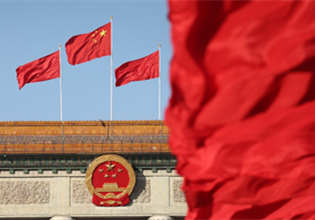Avoiding marginalization by embracing informatization
On growing problem of the information age is the “data gap” between different ethnic groups because of an imbalance in language informatization, or information marginalization, according to a professor from Inner Mongolia University who is calling for greater use of ethnic group language resources to prevent the loss of local languages.
Mongolian is mainly spoken in Mongolia and Inner Mongolia, which has a large number of speakers, and where Mongolian ethnic group account for about 17 percent of the region’s population. Some young Mongolians, however, cannot use the language to communicate.
So, to stop the “marginalization” of the language and culture, the region has been concentrating on the ethnic culture and the Mongolian languageI and its informatization. The government already began looking at Mongolian informatization back in 2012 and set up a special fund for this project and, by 2014, had come up with a mid-to-long term plan on language informatization that called for including all aspects of the ethnic group’s daily life and work.
Through a joint effort with government, companies, universities and research institutes, Inner Mongolia developed 45 Mongolian informatization projects in basic research, technology and educating professionals, and, by this past September it had developed a smart phone system in Mongolian one of its first successful cases. It uses left-vertical typing in accordance with the Mongolian language with a Chinese-Mongolian interface.
Liang Jinbao, head of R&D on the system, notes, “We’re working on advanced R&D and expect to have an upgraded version with better performance and interface layout by the end of this year.”
However, the informatization of the Mongolian language does not mean only transferring the language from books to a screen, but rather the informatization of different fields with this language as a carrier, such as ethnic education, culture, agriculture and traditional medicines, for example by developing an online platform that makes courses in Mongolian available for students and teachers.
And, fortunately, it is not only the government that is making an effort, but also different parts of society, or, as Liang explains, “I knew someone was trying to develop a Mongolian operating system back in 2006, and, by now, there are several teams working on Mongolian input methods,”
One regional official adds that the Mongolian informatization has had a clear effect, but it’s far from enough, so the government will take care of the problem in the area of shortage of personnel, a weak foundation, technology, and publicity through investment and support projects.
According to one local economist, “The culture but not economy should measure more weight in the promotion of Mongolian language and culture.”



 Print
Print Mail
Mail





